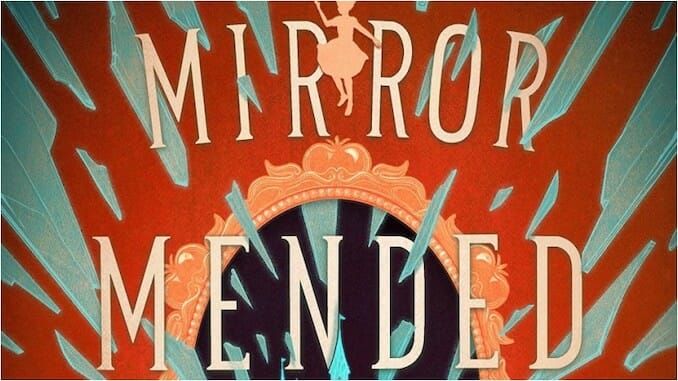A Mirror Mended: Alix E. Harrow’s Fractured Fairytales Series Remains Delightful
Books Reviews Alix E. Harrow
Fairytale retellings are all the rage right now, but at this point, there are so many new versions of Beauty and the Beast and Cinderella that it can feel difficult to know where to start. Enter Alix E. Harrow. Author of such richly textured stories as Ten Thousand Doors of January and The Once and Future Witches, Harrow has already proven herself a deft and thoughtful storyteller with an easy grasp on blending times and timelines to create something multi-layered and magical.
Her “Fractured Fairytales” series of novellas are basically hyper-distilled versions of everything that makes her writing great: full of rich character arcs and entertaining pop-culture references, all perfectly sized to be devoured in a single sitting. Fast-paced, snarky, and utterly charming, Harrow’s series of feminist retellings are an all-around breath of fresh air, a sort of fairytale version of Into the Spiderverse that acknowledges various forms of the original stories alongside their subsequent more modern or familiar versions.
A Spindle Splintered reimagined the tale of Sleeping Beauty as a story of empowerment and collaboration which gave the original’s often passive princess the agency she so often lacks. A Mirror Mended offers a similar treatment to the story of Snow White, focusing on that tale’s Evil Queen, a woman, it should be noted who doesn’t even get a name of her own in the original version.
Picking up five years after the events of A Spindle Splintered, we find Zinnia Gray, former Sleeping Beauty stand-in turned damsel rescuer who’s been steadily jumping through different versions of her own tale to free the eponymous princesses from the destinies of eternal slumber and enforced marriage. But at the end of her most recent rescue, she’s pulled into what is essentially a fairytale multiverse, crossing over into a different tale entirely: “Snow White”, where she learns she has been essentially kidnapped by a villain in search of her own happy ending.
Zinnia knows how this story is supposed to end—how all fairytales are meant to end for the largely nameless Big Bads who drive their heroines’ narratives forward. But the Evil Queen, whom Zinnia dubs Eva for the ease of simply having something to call her, has other ideas and very much doesn’t want to dance herself to death in hot iron shoes, fall off a cliff, or live forever in ugliness and misery. (Which is how her tale ends in several of the more popular versions of Snow White.)
As Zinnia tries to plot her escape back to her own story—and ignore how attractive she finds Eva—she attempts to teach the Evil Queen about such concepts as narrative agency and what it means to truly be the protagonist of your own story. (Lessons which, unsurprisingly, Zinnia herself is still growing into her understanding of on her own journey, in which she has repeatedly pushed off making firm choices about her own future.)
Harrow deftly uses Zinnia’s knowledge of folklore and anthropology to illuminate the many uncomfortable, patriarchal, and even downright creepy aspects of traditional fairytales that we’ve all basically been conditioned to accept as necessary parts of the stories they’re telling. (One of my favorite examples of this is the revelation that the iconic phrase “happily ever after” ??was originally “happily in the ever after,” which adds a much more uncomfortable—and possibly even sinister— sheen to its meaning.)
The chemistry between Zinnia and Eva is surprisingly charming and the relationship between the two evolves in interesting and unexpected ways throughout their journey together. And while the story’s ending has the bittersweet feel of many of the original classic Grimms’ tales asks both Zinnia as a heroine and us as readers to reevaluate our definitions of what happy endings are in the first place. Is it better to settle for safety or choose your own fate, even if it’s perhaps not the ending your imagined for yourself when your story began?
A Mirror Mended itself feels like an ending, in a way—Zinnia returns home, changed, and a different version of the girl she was, as all good fairytales must conclude. But there are plenty of other stories to explore out there in the wide fairytale multiverse, so here’s hoping Harrow revisits this series again in the future.
A Mirror Mended is available now.
Lacy Baugher Milas is the Books Editor at Paste Magazine, but loves nerding out about all sorts of pop culture. You can find her on Twitter @LacyMB.